BRANDING A REASON FOR BEING
PRESS PLAY>> NOW TO VIEW KEN’S VIDEO MESSAGE FOR THIS MONTH.
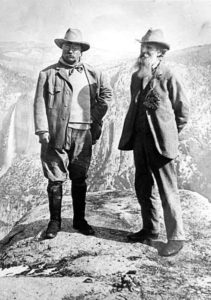 When Teddy Roosevelt and John Muir stood at the same spot as I did for this month’s video, I’m sure they were not thinking about branding as they had their vision for the National Park System in the US. However, I’m sure their thinking was consistent with the first step in creating an effective brand strategy. As I’ve pointed out in all of my branding presentations, the first step is to have a clear vision for your brand and why it will have value to your potential customers. Looking out from Glacier Point that day a century ago, I’m sure that Roosevelt and Muir understood that the beauty and splendor of what they saw (now Yosemite National Park) would add enjoyment and appreciation to generations of Americans and that if this was going to preserve that value, there needed to be a plan (as in brand strategy) to ensure that we maintain these landmark locations for generations to come.
When Teddy Roosevelt and John Muir stood at the same spot as I did for this month’s video, I’m sure they were not thinking about branding as they had their vision for the National Park System in the US. However, I’m sure their thinking was consistent with the first step in creating an effective brand strategy. As I’ve pointed out in all of my branding presentations, the first step is to have a clear vision for your brand and why it will have value to your potential customers. Looking out from Glacier Point that day a century ago, I’m sure that Roosevelt and Muir understood that the beauty and splendor of what they saw (now Yosemite National Park) would add enjoyment and appreciation to generations of Americans and that if this was going to preserve that value, there needed to be a plan (as in brand strategy) to ensure that we maintain these landmark locations for generations to come.
On August 25, 1916, President Woodrow Wilson signed a bill that mandated the agency “to conserve the scenery and the natural and historic objects and wildlife therein, and to provide for the enjoyment of the same in such manner and by such means as will leave them unimpaired for the enjoyment of future generations.” Development of the National Park System was the brand strategy to insure that this bill was successful. The same is true in developing a brand strategy for your product or service. First, you need to recognize that there is a need for the product that can’t be found elsewhere. Dr. Len Berry at Texas A&M noted that a successful brand has “a reason for being” and as you look at many of those brands that have come and gone, you have to ask what was the reason for being in the first place?
Recent successes of brands like Google, Apple, Prius, CarMax and more, all began with a vision of a product or service that provided a new value that customers would recognize and want not only today but also for years (and generations of customers) to come. Certainly, the key to longevity is to constantly review and revise the marketing plans and strategies, but to maintain a long-term brand a marketer has to consistently reflect on the original vision and criteria for the brand and maintain its integrity. The National Park System has grown and adjusted its operations to meet the changing needs and wants of its visitors, yet it stands steadfastly by its original vision of conservation and preservation of their product—the beautiful national parks that people come to see every year.
 I was involved with the original opening and marketing of CarMax in Richmond in 1994. The company was created by Circuit City to capitalize on some of its operational and financial strengths in the electronics business that would translate well to the used car business. It also had a vision to provide a completely new experience in shopping and buying a previously- owned vehicle. Recognizing the many experiences that car buyers had with traditional car dealers, CarMax researched those experiences and then built a totally new concept from the bottom up to provide a value to car buyers. Its vision was to answer the complaints of the car buyer and market it in a creative, intelligent way. The plan has worked as CarMax has thrived (while Circuit City faded away). I believe that CarMax’s new campaign (20 years later) is one of the best in the automotive industry. Click on this link to view one of the new spots (https://youtu.be/1Qkd9AGWU48). Yet it still stands out by addressing the same problems that other dealers still present to their prospective and existing customers. They have a reason for being and a vision to provide a pleasant experience.
I was involved with the original opening and marketing of CarMax in Richmond in 1994. The company was created by Circuit City to capitalize on some of its operational and financial strengths in the electronics business that would translate well to the used car business. It also had a vision to provide a completely new experience in shopping and buying a previously- owned vehicle. Recognizing the many experiences that car buyers had with traditional car dealers, CarMax researched those experiences and then built a totally new concept from the bottom up to provide a value to car buyers. Its vision was to answer the complaints of the car buyer and market it in a creative, intelligent way. The plan has worked as CarMax has thrived (while Circuit City faded away). I believe that CarMax’s new campaign (20 years later) is one of the best in the automotive industry. Click on this link to view one of the new spots (https://youtu.be/1Qkd9AGWU48). Yet it still stands out by addressing the same problems that other dealers still present to their prospective and existing customers. They have a reason for being and a vision to provide a pleasant experience.
Too often, companies develop new communications strategies as nothing more than ad campaigns that lose sight of their original vision and as a result they lose their reason for being in trade for a new slogan or logo. Standing up for the value that the brand provides while remaining fresh and current with your brand messages is critical for long-term success. Just as El Capitan and Half Dome are symbols of the Yosemite National Park, the value and unique selling proposition for your brand must be maintained as the symbols for why your brand was created in the first place.

 1. Create Your Vision: The first step in the customer journey is becoming aware of your product or service. This really starts with you and your company. You need to figure out why the customer would be interested in your product or service in the first place. What makes it different? Why should I be interested in learning more about it? As you develop your brand strategy and options, remember to ask what is going to keep the customer coming back.
1. Create Your Vision: The first step in the customer journey is becoming aware of your product or service. This really starts with you and your company. You need to figure out why the customer would be interested in your product or service in the first place. What makes it different? Why should I be interested in learning more about it? As you develop your brand strategy and options, remember to ask what is going to keep the customer coming back.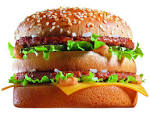 Yum!
Yum!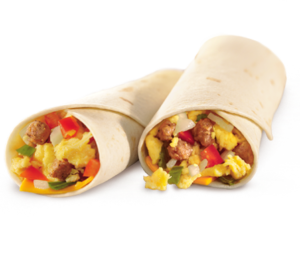

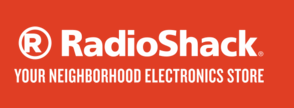 Which brings about the question of brand equity. Many believe that if you build top of mind awareness, you have a successful brand. All you have to do is look at Kmart and Sears or Oldsmobile and Plymouth to mention just of few well-known names that just simply weren’t or aren’t relevant any more. As Radio Shack itself admitted in its 2013 Annual Report, the company “struggled to find its place in the market, and more important, with the consumer.” You have to give Radio Shack credit, it was able to spot new technology and become a pioneer in the electronic calculator, then home computers, and later with wireless. Yet, it never became the destination brand for any of them despite aggressive advertising.
Which brings about the question of brand equity. Many believe that if you build top of mind awareness, you have a successful brand. All you have to do is look at Kmart and Sears or Oldsmobile and Plymouth to mention just of few well-known names that just simply weren’t or aren’t relevant any more. As Radio Shack itself admitted in its 2013 Annual Report, the company “struggled to find its place in the market, and more important, with the consumer.” You have to give Radio Shack credit, it was able to spot new technology and become a pioneer in the electronic calculator, then home computers, and later with wireless. Yet, it never became the destination brand for any of them despite aggressive advertising. When I got to PetSmart in 1998, the company’s brand was essentially that of a big box, warehouse-type store for pet supplies. It had dog and cat food stacked to the ceilings, and low prices. But it was much, much more. I joined the company because Sam Parker (founder) and Phil Francis (then CEO) told me during our interview dinner that they wanted to have their customers love their stores as much as they loved their pets. You see, for most PetSmart customers their pets were members of their families—not just animals that lived at their houses. This became the foundation of a brand strategy that we developed and essentially still drives the store’s success today. Part of the strategy was to show that PetSmart associates (from the CEO on down to the selling floor) were pet lovers as well. A look at the annual reports revealed not only the officers but also their pets (who shared the official head shots. My family filled the bill. We had a yellow lab that we adopted some 14 years before I joined the company and several other pets along the way. Unfortunately, Cuddles (our lab and family member) passed away a couple months after I moved to Phoenix and joined the company. One of my first orders of business was to let our PetSmart Charities staff know that we wanted to adopt another pup—preferably a smaller breed and a few months later, Winter chose to live with us for the next 14 years.
When I got to PetSmart in 1998, the company’s brand was essentially that of a big box, warehouse-type store for pet supplies. It had dog and cat food stacked to the ceilings, and low prices. But it was much, much more. I joined the company because Sam Parker (founder) and Phil Francis (then CEO) told me during our interview dinner that they wanted to have their customers love their stores as much as they loved their pets. You see, for most PetSmart customers their pets were members of their families—not just animals that lived at their houses. This became the foundation of a brand strategy that we developed and essentially still drives the store’s success today. Part of the strategy was to show that PetSmart associates (from the CEO on down to the selling floor) were pet lovers as well. A look at the annual reports revealed not only the officers but also their pets (who shared the official head shots. My family filled the bill. We had a yellow lab that we adopted some 14 years before I joined the company and several other pets along the way. Unfortunately, Cuddles (our lab and family member) passed away a couple months after I moved to Phoenix and joined the company. One of my first orders of business was to let our PetSmart Charities staff know that we wanted to adopt another pup—preferably a smaller breed and a few months later, Winter chose to live with us for the next 14 years.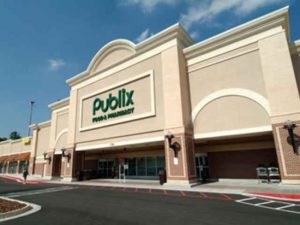 Publix continues to get national attention for its marketing even though its regional player in the grocery store business. There’s a good reason that it may be in just a few southern states but it’s revenues and customer satisfaction is right near the top nationally year after year and growing. Again, this year, Publix captures the spirit of the holidays with a couple of spots that bring out the family values and the sentiment of the season. They carry this through in-store and in their multi-faceted (read as “not just another sale”) print and online messages. Take a look at these spots that not only tug at your heart but also strengthen the promise that ‘shopping is a pleasure” at Publix.
Publix continues to get national attention for its marketing even though its regional player in the grocery store business. There’s a good reason that it may be in just a few southern states but it’s revenues and customer satisfaction is right near the top nationally year after year and growing. Again, this year, Publix captures the spirit of the holidays with a couple of spots that bring out the family values and the sentiment of the season. They carry this through in-store and in their multi-faceted (read as “not just another sale”) print and online messages. Take a look at these spots that not only tug at your heart but also strengthen the promise that ‘shopping is a pleasure” at Publix.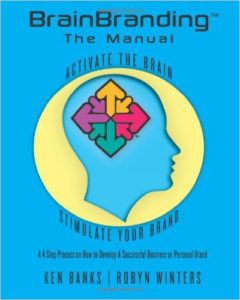 One of the principles that we stress in our book, BrainBranding. Activate the Brain. Stimulate Your Brand, is that your marketing communications have to always be in sync with your brand strategy. Whether it’s your advertising, your PR, your signage, or your designs, what you communicate should reinforce what you want to be famous for with your customers and prospects. I remember a few years ago when I was directing the major annual sales meeting for our operations and merchandising staffs at Eckerd, we contracted with a well-known and respected speaker on customer service and employee relations to give a keynote presentation to the over 1000 associates and suppliers in attendance. I had seen this expert at another conference and thought his message was right on for our strategy to better serve our customers and build employee morale. When he arrived at the meeting hall, he immediately went into a rage that the video setup was not as requested, using four-letter expletives and basically talking to us (who were paying him a premium fee) like we were imbeciles. If it hadn’t been 2 hours before his presentation, I would have cancelled on the spot and I assure you that no one who was present at the rehearsal believed a word of his presentation. His actions were not in rhythm with his message nor his promotional materials. I can assure you that later as I became a professional speaker, I never recommended this individual when asked for a recommendation.
One of the principles that we stress in our book, BrainBranding. Activate the Brain. Stimulate Your Brand, is that your marketing communications have to always be in sync with your brand strategy. Whether it’s your advertising, your PR, your signage, or your designs, what you communicate should reinforce what you want to be famous for with your customers and prospects. I remember a few years ago when I was directing the major annual sales meeting for our operations and merchandising staffs at Eckerd, we contracted with a well-known and respected speaker on customer service and employee relations to give a keynote presentation to the over 1000 associates and suppliers in attendance. I had seen this expert at another conference and thought his message was right on for our strategy to better serve our customers and build employee morale. When he arrived at the meeting hall, he immediately went into a rage that the video setup was not as requested, using four-letter expletives and basically talking to us (who were paying him a premium fee) like we were imbeciles. If it hadn’t been 2 hours before his presentation, I would have cancelled on the spot and I assure you that no one who was present at the rehearsal believed a word of his presentation. His actions were not in rhythm with his message nor his promotional materials. I can assure you that later as I became a professional speaker, I never recommended this individual when asked for a recommendation.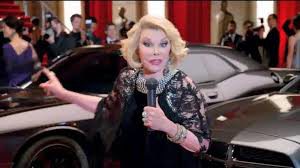 With Joan Rivers’ passing recently, I was reminded of how out of rhythm Dodge auto advertising was when they ran a campaign using her to promote their award event earlier this year. Chrysler has been trying to reposition the Dodge brand as a serious performance line but the Joan Rivers spots were silly and had no rhythm with the spots that ran earlier nor the current “heritage” spots running now.
With Joan Rivers’ passing recently, I was reminded of how out of rhythm Dodge auto advertising was when they ran a campaign using her to promote their award event earlier this year. Chrysler has been trying to reposition the Dodge brand as a serious performance line but the Joan Rivers spots were silly and had no rhythm with the spots that ran earlier nor the current “heritage” spots running now. JCPenney’s rebranding efforts a couple years ago were well documented and pushed the company’s stock to all-time lows and comp sales to embarrassingly negative figures. It cost the CEO his job, the CMO left shortly after joining the company, and the customers stayed away as the company (which had positioned itself successfully versus traditional department stores and discount chains) abandoned providing consistent promotion mixed with strong positioning. The pendulum has swung back to aggressive promoting (like Kohl’s) but without the positioning that differentiated JCP from other retailers. Again it’s branding has been lost in a barrage of sales with no rhythm with the brand that was so strong in the past and stores that really are appealing to today’s customers.
JCPenney’s rebranding efforts a couple years ago were well documented and pushed the company’s stock to all-time lows and comp sales to embarrassingly negative figures. It cost the CEO his job, the CMO left shortly after joining the company, and the customers stayed away as the company (which had positioned itself successfully versus traditional department stores and discount chains) abandoned providing consistent promotion mixed with strong positioning. The pendulum has swung back to aggressive promoting (like Kohl’s) but without the positioning that differentiated JCP from other retailers. Again it’s branding has been lost in a barrage of sales with no rhythm with the brand that was so strong in the past and stores that really are appealing to today’s customers. Subway sandwich shops have grown successfully with a brand that positioned them as a healthier alternative to traditional fast food chains. However, now it seems that they are piling on more junk food between the bread and more cholesterol and fat along with it. The messages are out of rhythm with the healthier approach without promising too much benefit. We all love bacon on our sandwiches but really enough is enough.
Subway sandwich shops have grown successfully with a brand that positioned them as a healthier alternative to traditional fast food chains. However, now it seems that they are piling on more junk food between the bread and more cholesterol and fat along with it. The messages are out of rhythm with the healthier approach without promising too much benefit. We all love bacon on our sandwiches but really enough is enough.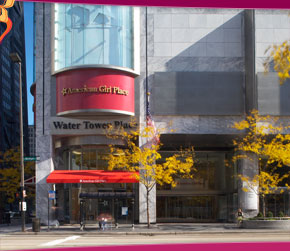 Speaking of the experience, we visited the American Girl store in Water Tower Place in Chicago (our granddaughter’s favorite place in the world) and talk about an experience! We were there on a Monday and the place was packed with 5-8 year-old girls accompanying their dolls (or girls as they call them) on a special shopping trip. Parents and grandparents were there too to pay for everything, but it was fascinating to see how AG has built an outstanding brand by building an experience for dolls that is so realistic and special that price is no object. Weather it’s getting an outfit for gymnastics or camping, they have it all and the girls love it. Need a new hairstyle; they’ve got a salon with specialists who can make that synthetic hair glow. Lunch? There’s a restaurant just for you and your dolls with special seating for the little ones. Even the rest rooms have special amenities for the American Girls while their live friends take care of business. The division of Mattel (what a sequel to Barbie!) now has 19 stores which offer what it calls “experiential retail” and if you look at their website for each store your daughter can choose from all kinds of experiences from birthday parties to a night out with your “girl” (for $195-240 per person). Starting out as a catalogue retailer, the company has created a cult brand that “inspires” their customers not just sell them a doll and its accessories. Their online business flourishes with an easy way for grandma to get just the right birthday or Christmas present without having to find a store. American Girl has learned that the brand is an experience and the more exciting they make it; the more loyal is their customer (and her parents).
Speaking of the experience, we visited the American Girl store in Water Tower Place in Chicago (our granddaughter’s favorite place in the world) and talk about an experience! We were there on a Monday and the place was packed with 5-8 year-old girls accompanying their dolls (or girls as they call them) on a special shopping trip. Parents and grandparents were there too to pay for everything, but it was fascinating to see how AG has built an outstanding brand by building an experience for dolls that is so realistic and special that price is no object. Weather it’s getting an outfit for gymnastics or camping, they have it all and the girls love it. Need a new hairstyle; they’ve got a salon with specialists who can make that synthetic hair glow. Lunch? There’s a restaurant just for you and your dolls with special seating for the little ones. Even the rest rooms have special amenities for the American Girls while their live friends take care of business. The division of Mattel (what a sequel to Barbie!) now has 19 stores which offer what it calls “experiential retail” and if you look at their website for each store your daughter can choose from all kinds of experiences from birthday parties to a night out with your “girl” (for $195-240 per person). Starting out as a catalogue retailer, the company has created a cult brand that “inspires” their customers not just sell them a doll and its accessories. Their online business flourishes with an easy way for grandma to get just the right birthday or Christmas present without having to find a store. American Girl has learned that the brand is an experience and the more exciting they make it; the more loyal is their customer (and her parents).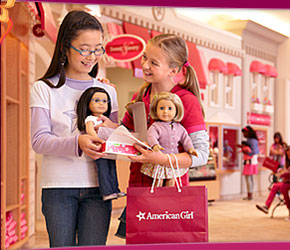 Whether it’s baseball or dolls, creating a memorable experience is the best way to build a relationship that makes a brand really special—and successful.
Whether it’s baseball or dolls, creating a memorable experience is the best way to build a relationship that makes a brand really special—and successful.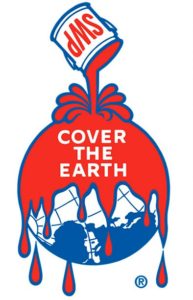 Williams is one of the top brands in household painting. They have built a loyal following over the years with a quality product sold in a service environment. The key to Sherwin Williams retail success—in the face of aggressive competition from the big box DIY stores like Home Depot and Lowe’s—is the reliance on the personalized service and expertise that their stores have provided almost since the beginning. Excellent selection in a convenient environment with experienced, friendly paint experts who can help you find exactly the right paint in the right color with right tools to make the job a success. However, Sherwin Williams has utilized the new media to add to the personalized value that they have always provided. Using its app, ColorSnap, makes finding the right color not only a snap but enables the customer to visualize how it will look in their home. The app enables the customer to take a photo or scan a color that he/she wants to match in their home project. You simply download to the app and SW analyzes it and provides you with the exact match to your color choice. Then they go a step further and enable you to take a photo of your house or room and then, using their app, you can insert the new color over the area you plan to paint. You can even mask it around windows or doors so you can really get an accurate picture of how the job will look before buying the paint or getting a sample and painting spots on the walls to see what looks best. Seeing the entire project in the right color makes it much more accurate and representative of what the finished job is going to look like. You can then save the various color applications on line/phone and bring into the store and discuss with the paint expert. The process adds technology to a great brand based on personalized service. And, speaking from personal experience, it really works.
Williams is one of the top brands in household painting. They have built a loyal following over the years with a quality product sold in a service environment. The key to Sherwin Williams retail success—in the face of aggressive competition from the big box DIY stores like Home Depot and Lowe’s—is the reliance on the personalized service and expertise that their stores have provided almost since the beginning. Excellent selection in a convenient environment with experienced, friendly paint experts who can help you find exactly the right paint in the right color with right tools to make the job a success. However, Sherwin Williams has utilized the new media to add to the personalized value that they have always provided. Using its app, ColorSnap, makes finding the right color not only a snap but enables the customer to visualize how it will look in their home. The app enables the customer to take a photo or scan a color that he/she wants to match in their home project. You simply download to the app and SW analyzes it and provides you with the exact match to your color choice. Then they go a step further and enable you to take a photo of your house or room and then, using their app, you can insert the new color over the area you plan to paint. You can even mask it around windows or doors so you can really get an accurate picture of how the job will look before buying the paint or getting a sample and painting spots on the walls to see what looks best. Seeing the entire project in the right color makes it much more accurate and representative of what the finished job is going to look like. You can then save the various color applications on line/phone and bring into the store and discuss with the paint expert. The process adds technology to a great brand based on personalized service. And, speaking from personal experience, it really works. Quest Diagnostics has grown to be the largest provider of health diagnostic lab work in the US with over 2200 lab patient centers and over 41000 associates. As lab work has become an important part of almost any doctor’s appointment today, Quest has become the preferred choice due to its convenience and service. However, as a lab user for many years, it has not always been the most convenient or pleasant experience. In recent years, the company has really made the effort to make the experience easier, quicker and more professional and painless (in many ways). Now the company has added the My Quest app so that you can not only schedule an appointment online so there is literally no wait and you can also follow up on the results right from your smart phone. By simply registering online and installing the app, getting lab work done is easier and more convenient than ever and now works with your schedule rather than the lab’s availability. It also facilitates the communication between lab and physician so that your results are more timely and easily understood by the patient. In addition to building a preferred brand for a very important and frequently used service, Quest has used the new media to make the entire experience a brand building opportunity.
Quest Diagnostics has grown to be the largest provider of health diagnostic lab work in the US with over 2200 lab patient centers and over 41000 associates. As lab work has become an important part of almost any doctor’s appointment today, Quest has become the preferred choice due to its convenience and service. However, as a lab user for many years, it has not always been the most convenient or pleasant experience. In recent years, the company has really made the effort to make the experience easier, quicker and more professional and painless (in many ways). Now the company has added the My Quest app so that you can not only schedule an appointment online so there is literally no wait and you can also follow up on the results right from your smart phone. By simply registering online and installing the app, getting lab work done is easier and more convenient than ever and now works with your schedule rather than the lab’s availability. It also facilitates the communication between lab and physician so that your results are more timely and easily understood by the patient. In addition to building a preferred brand for a very important and frequently used service, Quest has used the new media to make the entire experience a brand building opportunity.
Recent Comments